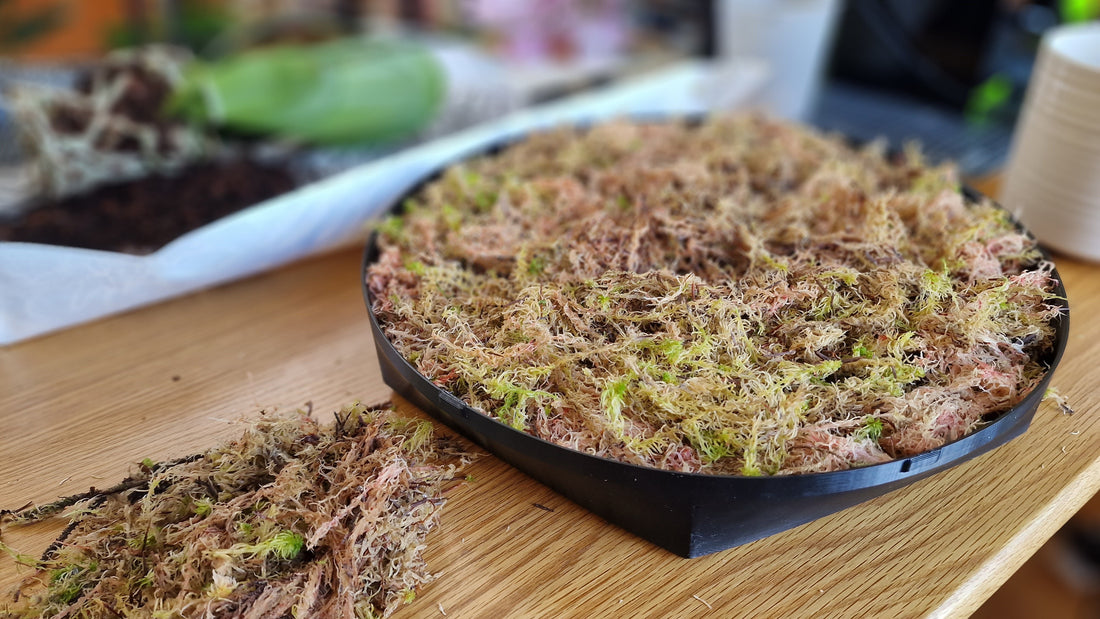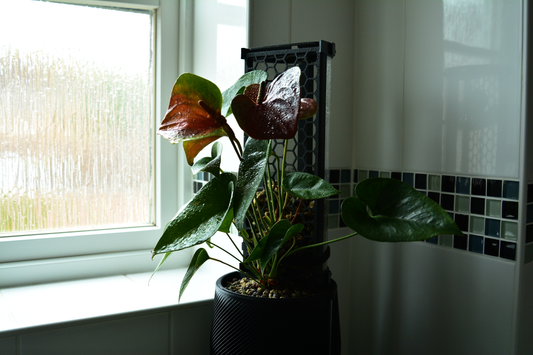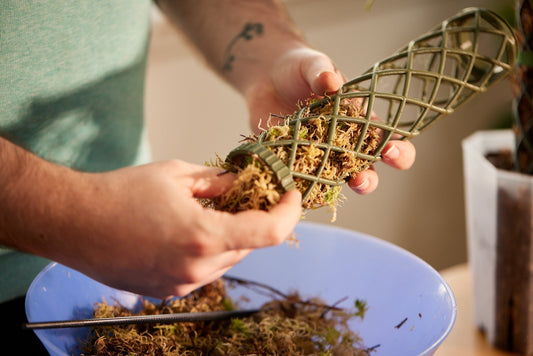
What kind of moss should you use for your moss pole
Share
Selecting the right type of moss for your moss pole is crucial for ensuring optimal plant growth and longevity. Our top choice for moss poles is sphagnum moss (more about that below), but there are also other types of moss you can use, and if you are into building terrariums, you will probably want to try something like reindeer moss too. The moss you choose will provide vital micronutrients for your plants, so it is crucial to opt for high-quality moss.
So, let's explore the different types of moss available and help you determine which one suits your indoor plants best!
(Remember: moss is not the only substrate you can use to grow your plants - orchids prefer bark and can be used in our Tupa moss habitat for example).
Best for moss poles: Sphagnum (live) moss
Sphagnum moss is the most popular choice for moss poles due to its excellent water retention properties, plus it is easily available online.
It holds moisture effectively, creating a humid microclimate around plant roots, which is particularly beneficial for tropical climbers.
Sphagnum moss also possesses natural antimicrobial properties, reducing the risk of fungal diseases and promoting overall plant health. Additionally, its soft texture provides a comfortable surface for plants to attach their aerial roots and climb.
When you buy live sphagnum moss, you may want to go through it, as sometimes bits of plants and terrain get mixed in. This is totally normal. We always go through our moss and separate it out when filling our moss poles.

You can also buy moss bricks which you will need to hydrate (soak in water).
Always source your moss ethically! This means getting your moss from local and licensed peat-free moss suppliers.
Sheet moss
Sheet moss, also known as hypnum moss, offers a lush and vibrant green appearance, making it a visually appealing option for moss poles. While it may not retain water as efficiently as sphagnum moss, it still provides adequate support for climbing plants and helps maintain moisture levels in the soil.
Sheet moss is easy to work with and can be securely attached to moss poles, creating a natural and organic look in your indoor garden.
Reindeer moss
Reindeer moss, despite its name, is not actually a moss but a lichen. However, it is often used in combination with other mosses to add texture and visual interest to moss poles. Reindeer moss comes in various shades, including green, gray, and orange, allowing for creative designs and colour schemes in your indoor garden. While it doesn't offer the same moisture retention as sphagnum moss, it can be a decorative accent when incorporated into moss pole arrangements.
Reindeer moss is popular in terrariums due to its fun colours.
Spanish moss
Spanish moss is another non-moss plant that is commonly used for decorative purposes in moss poles. It has a distinctive appearance, with long, trailing strands that add an air of whimsy to indoor gardens. While Spanish moss doesn't provide structural support like sphagnum or sheet moss, it can be draped over moss poles to create a cascading effect, enhancing the aesthetic appeal of your plant display.
Choosing the right moss
When selecting moss for your moss pole, consider the specific needs of your plants, as well as your aesthetic preferences. If moisture retention is a priority, opt for sphagnum moss, whereas if you're looking to add visual interest, consider incorporating sheet moss, reindeer moss, or Spanish moss into your design. You could create your own unique moss blend.
Additionally, ensure that the moss you choose is sustainably sourced and free from pesticides or other harmful chemicals.
Another thing to consider is always using peat-free moss, as peat soils and moss are not environmentally-friendly.
When moss might not be the best
Moss is not all you can use with 3D printed moss poles though! As we expand our moss pole family into moss habitats (Koto and Tupa), we are seeing different kinds of substrates used to fill moss poles. Orchids benefit from a special type of bark mix that you can find online and can use to fill the Koto for example. On one level, the moss pole or habitat can be seen as a flexible "vessel" that can accept any type of substrate - what matters is what is best for the plants. Sphagnum moss is the clear winner when it comes to common indoor plants and climbing plants, but there isn't always a one-size-fits-all approach to plants.

The type of moss you use for your moss pole can have a significant impact on the health and appearance of your indoor plants. Whether you prioritise moisture retention, visual appeal, or a combination of both, there are various moss options available to suit your needs. By selecting the right moss and incorporating it into your moss pole design, you can create a thriving and visually stunning indoor garden that will be the envy of all who see it.



